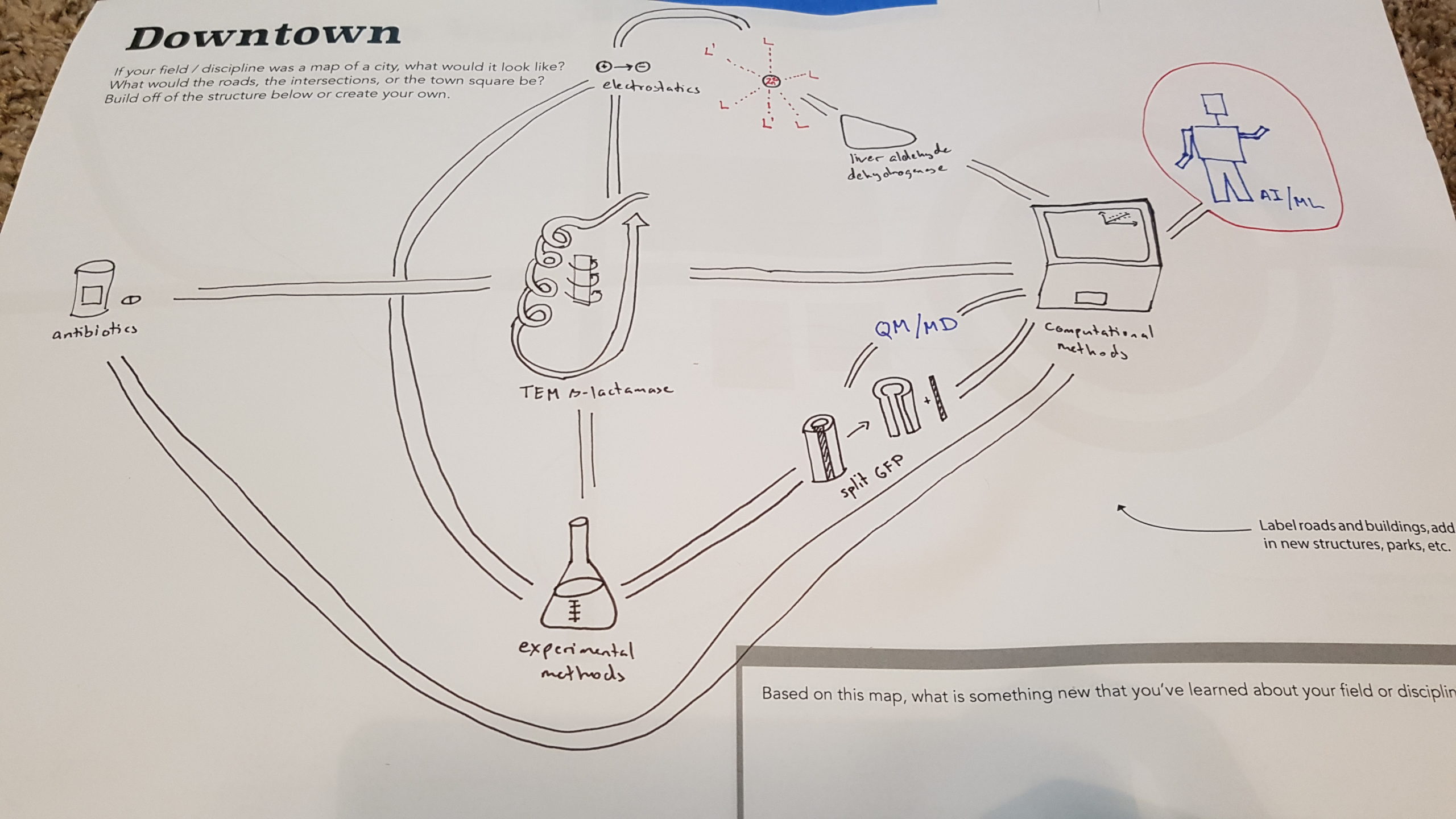I attended another postdoc workshop last Friday. It was called Creativity in Research and we learned to use our creativity to get unstuck, create collaborative projects, and design our research projects.
The workshop started out with various games. One of them was to spontaneously draw a random person sitting in front of us. And then we gave the picture we drew to the person we had drawn. I was lucky to get two drawings, both signed, so when either of them gets a Nobel Prize, I could frame them and donate them to a museum (or sell on e-bay, whichever one will be more beneficial…).
What makes you happy?
Another task we were given was to talk about the past week and simultaneously plot a graph of how our moods changed over the course of that week, to identify what makes us happy and what makes us sad. This exercise can be used to identify which tasks drain our energy and what gives us energy so we can tailor our days being on the positive energy side, which will make us happier and more productive. An interesting and useful exercise indeed!
Who are you?
Different people have different methods for getting unstuck, but sometimes when you are stuck, you don´t know how to get out of it. In my case, my partner was stuck in a deadlock – she needed to do three things at the same time, but of course, she didn´t have time to do that. And she couldn´t focus on just one task, because the others also needed to be finished. She was stuck. So how do you get out of that? After listening to her for a while I offered her some advice based on what I had learned about her and her style from a previous exercise. The point of this task was to learn that when you closely observe and listen to another person you will be able to help them solve their problems because you understand what their problem is, why it is a problem for them, and what type of solution could work out for them. This exercise taught me to spend more time observing how people behave in their everyday life. Not just what or how people talk, but also how they walk and do everyday things. When you have noticed this, you also get insight into the person´s personality, and this can be useful when trying to work with them.
What is your project?
We had several project-related tasks. One interesting one was trying to design a collaborative research project with a random person in the room that you didn´t know before. Based on our skills and knowledge in our own fields, we tried to find a middle ground where we could collaborate. Although there must have been at least 20 people in the room, every group of two people was able to create a collaborative project, regardless of how close or far the two fields were. This shows that whenever two people really put their minds to it, they can find a solution.
Was it a good workshop?
There were many more tasks that we did that was very useful and I will use these techniques to improve my project design process, but also for future projects, whether research or personal. The workshop was a lot of fun and broadened my mindset. It showed the importance of not restricting yourself in the thinking process and also, that a person – regardless of who it is – can help you move on in your process. Differing perspectives are not a bad thing, and even the wildest ideas can help you move forward. If you have the opportunity to enroll in the workshop in the future, don´t hesitate. Just do it!
